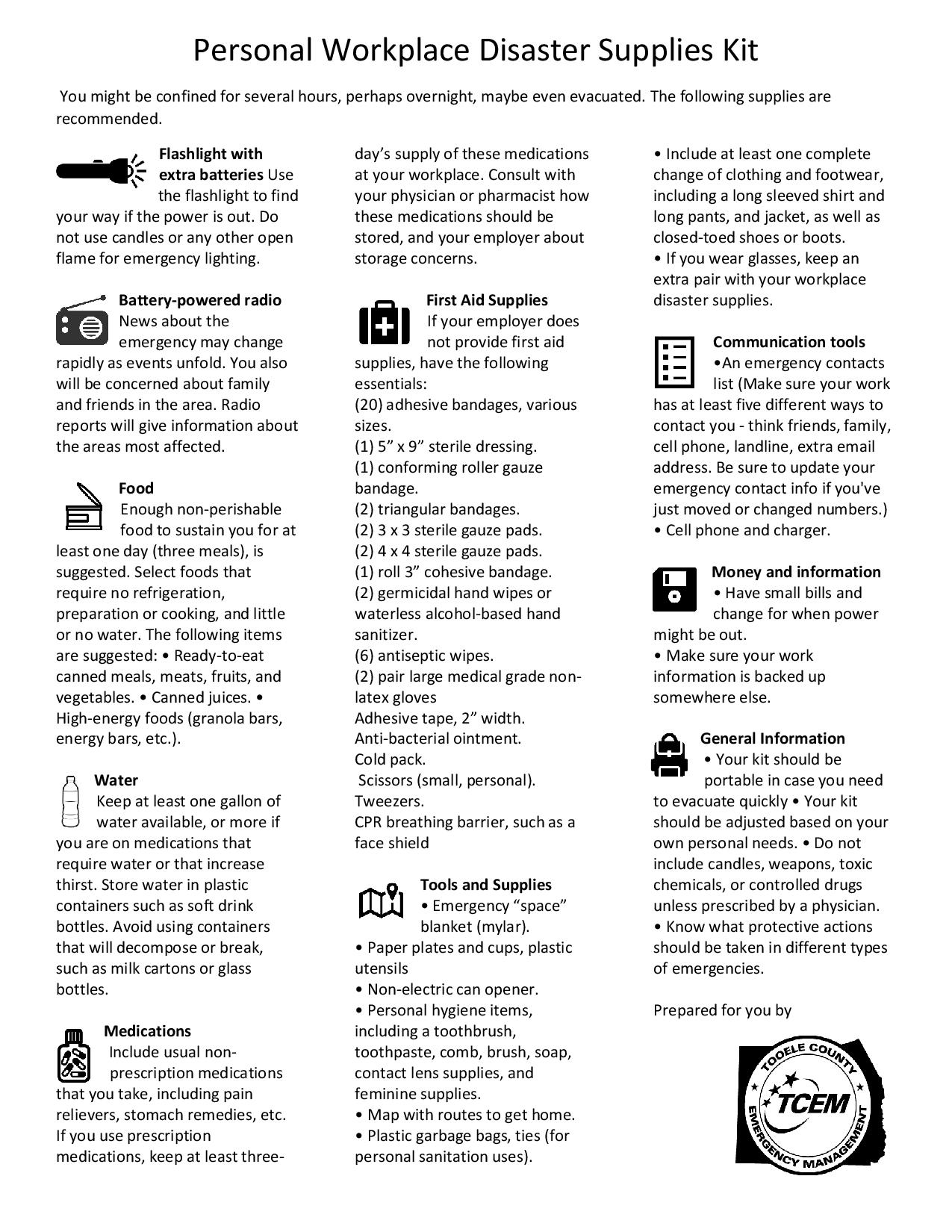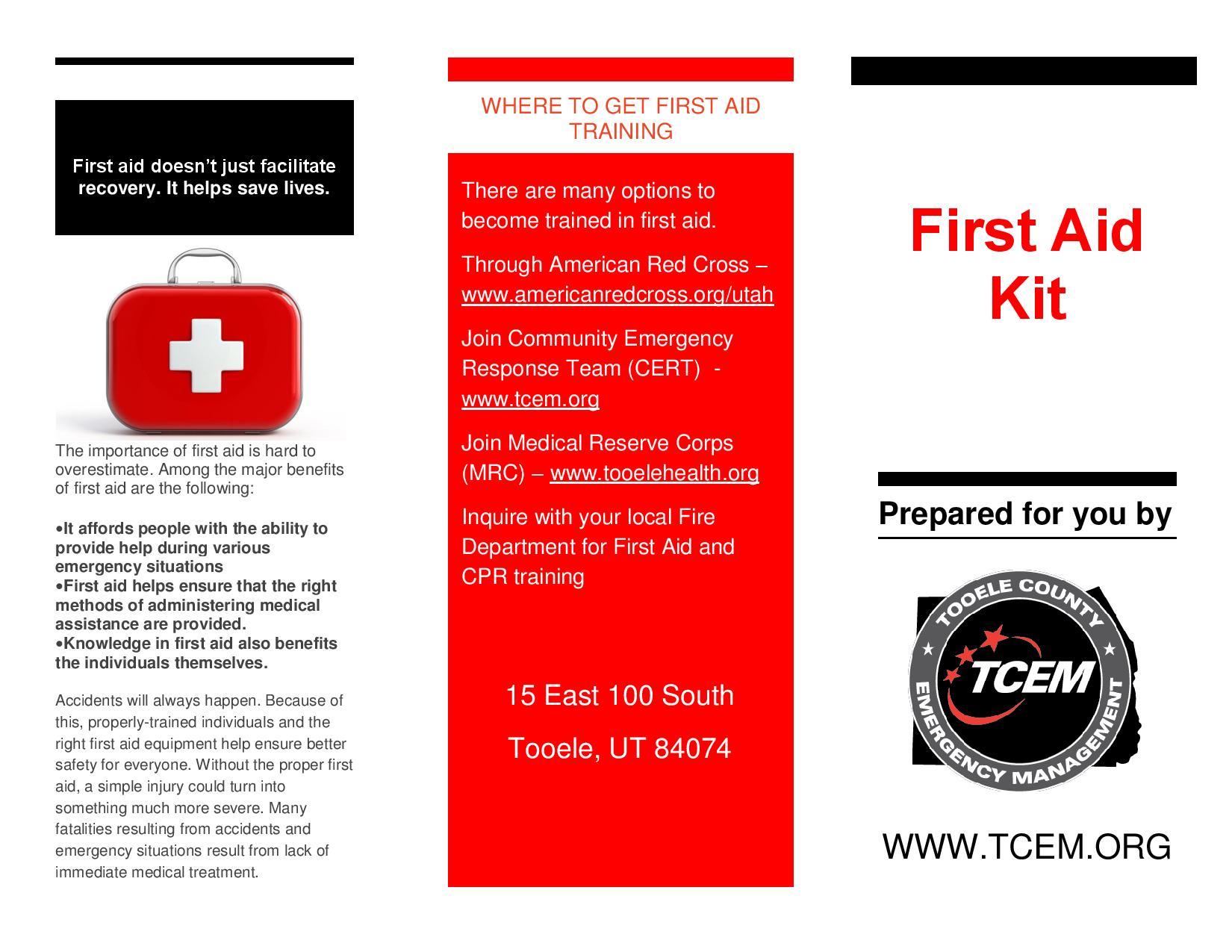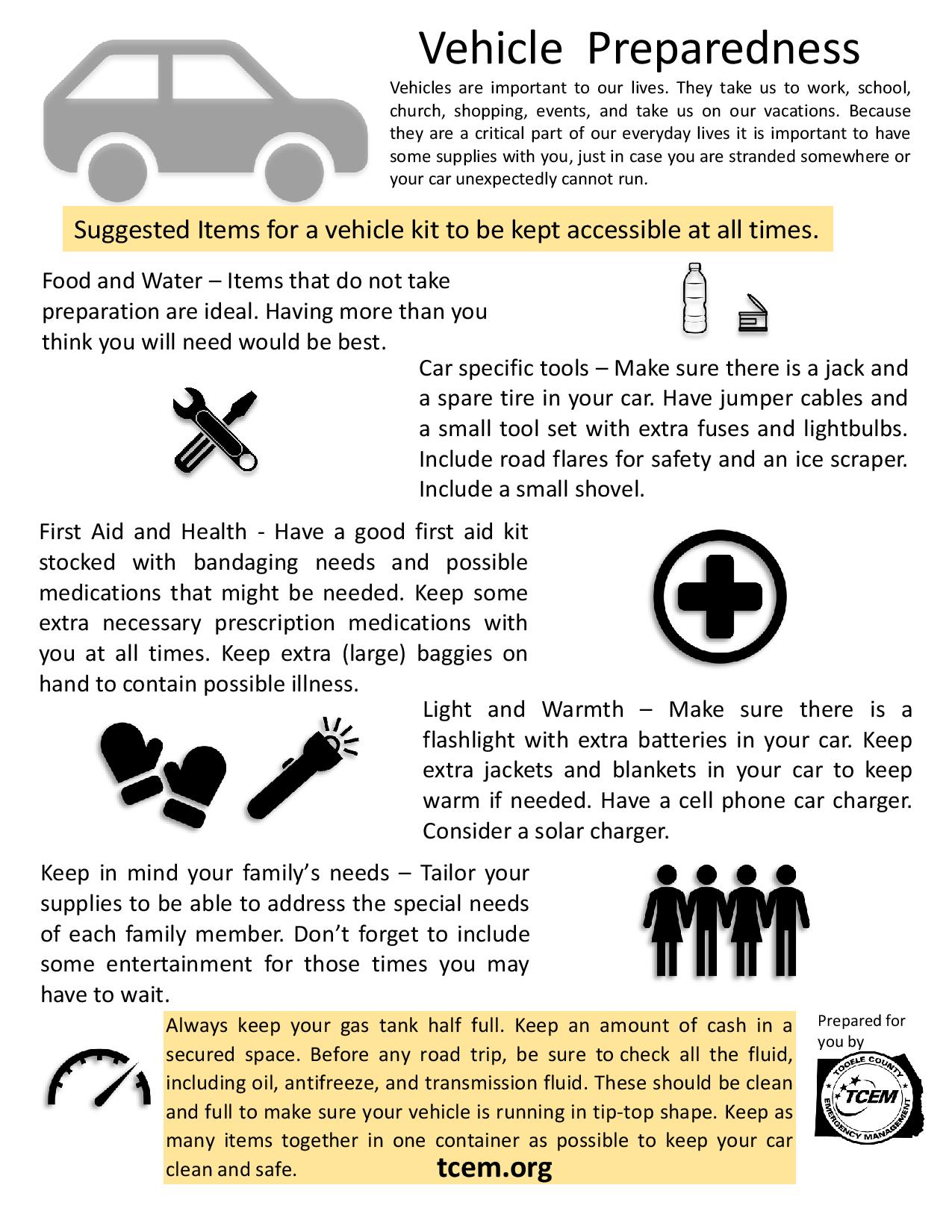Emergency Preparedness


An emergency is any event that threatens to, or actually does, inflict damage to property or people. Emergencies can be small or large, and we often call large emergencies disasters. Disasters can include tornadoes and floods, explosions and toxic chemical releases, major transportation accidents such as airline crashes, and national security events.
Individual and Family Preparedness as well as workplace, school, and places of worship preparedness is the most important key to whole community recovery and resilience. When individuals, families and groups have a culture of preparedness, the entire community benefits, especially when it comes to recovery after an incident. While we all hope that nothing major will happen, we all know that there are no guarantees to anything in life and it is not a matter of if, but when something happens. Recent events have proven the effectiveness of personal preparedness in all aspect of the community. Preparedness can save lives and help people and communities recover.
To make preparing your family as simple and as doable as possible we have listed steps to help your family, your workplace, your school, and your place of worship with resources to help your preparedness process. Please help us help our communities by preparing individually and reaching out to help others who may not be able to help themselves.
- Know how you will hear about an emergency. Emergency officials use outdoor warning sirens, tone alert radios/indoor alert systems, highway message boards, radio and television, police vehicle public address systems, telephone calling trees, and social media (Twitter and Facebook). KSL 102.7 FM, 1160 AM and Channel 5; and KWDZ 910 AM are the primary and secondary Emergency Alert System (EAS) radio and TV stations, respectively, for your community.
- Know what to do to be safe – shelter-in-place, evacuate or remain indoors and monitor an EAS station if no other protective action is recommended. Unless you are told to evacuate, stay off the roads so that those who have been instructed to leave and emergency responders are not hampered by unnecessary traffic.
- Know your community’s evacuation routes. Choose your family’s out-of-neighborhood meeting place.
- Know the plans your child’s school and day care or recreation center has developed to keep them safe.
Set means, “Get it together.” Gather items to keep with you or in your car, home and workplace, and make:
- A Shelter-In-Place Kit and a Disaster Supply Kit.
- A list of important phone numbers, including an out-of-state contact that family members can call after the emergency to say they are safe. Keep a copy of the list with you at all times and in your emergency kits.
- A plan for home and work. After learning about your community’s emergency plans, decide exactly what you, family members and co-workers will do and how if you are told to evacuate or shelter-in-place. Consider what you will do when you are at home, at work, at a friend’s home, at a shopping center, at a doctor’s office, at a sports stadium or park, etc. Assign tasks and determine who will care for minors or people with special needs.
- Practice your shelter-in-place and evacuation plans often.
Act means, “Do it.” If an emergency or disaster happens:
- Do what emergency officials recommend — shelter-in-place, evacuate or stay where you are and monitor an EAS station for updates on the situation.
- Act immediately. Seconds matter. Don’t waste time looking for information or items not readily at hand.
Other tips:
- Pets: Most American Red Cross shelters will not accept pets. Find out whether your community has special plans for pet care. Do you need to make your own pet care plan? Don’t delay departure or divert from the most direct designated evacuation route to look for or board your pet. Your family’s safety is more important. Always leave your pet with enough food and water for a few days.
- Pick an out-of-state “family contact” for family members to call if you are separated. Put the contact’s phone number on your list of important phone numbers and have everyone memorize the number.
- Learn about emergency plans for your child’s school or daycare, for the nursing home or other facility where loved ones with special needs stay.
- Do not call 9-1-1 or use the phone during an emergency unless there is a life-threatening situation, such as a heart attack.
- If you might need or can offer a ride to someone without transportation in an evacuation, arrange this now.


